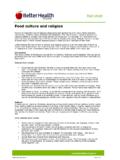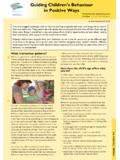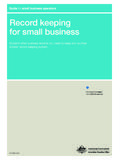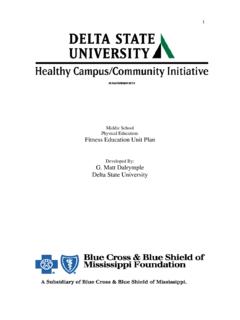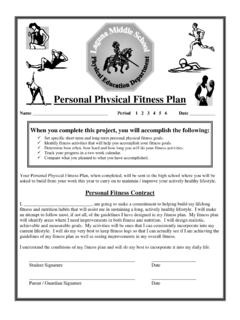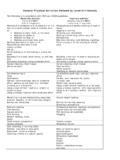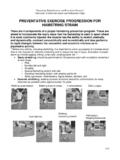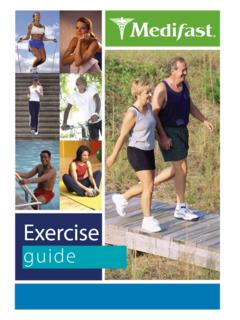Transcription of The Physical Activity Handbook - Imagine Education
1 AREA HEALTH SERVICEP reschoolersThe Physical Activity HandbookAREA HEALTH SERVICE3I Move We Move, The Physical Acitivity Handbook Preschoolers, Edition 1 August 20093 AREA HEALTH SERVICEI Move We Move, The Physical Acitivity Handbook Preschoolers, Edition 1 August 2009 Introduction Move We Move every day Table 1: Everyday activities for preschoolers that promote Physical Activity , especially the development to fundamental movement skills Table 2: Active play dramatic prop boxes Table 3: Music and movement for preschoolers Table 4: Transition activities Table 5: Active group time Table 6: Setting up equipment to promote Physical Activity including fundamental movement skillsLearning how to move: fundamental skills learning experiences for preschoolers up Table 7: Action stories, songs and rhymes Table 8: Stability skills activities down Table 9: Relaxation activities preschoolers progress in fundamental movement skills Figure 1: Obstacle course observations Figure 2: Locomotor skill checklist Figure 3: Level of engagement in fundamental movement skills learning experiences Figure 4.
2 Generic levels of movement skill proficiency of the warm up and cool down activities in this Handbook have been sourced from the Munch and Move Resource Manual developed by NSW Health4. NSW Health has kindly granted permission to reproduce parts of this resource. ContentsAREA HEALTH Move We Move, The Physical Acitivity Handbook Preschoolers, Edition 1 August 2009 Introduction The Physical Activity Handbook for Preschoolers has been designed to make it as easy as possible to encourage Physical Activity experiences for preschoolers. The ideas for Physical Activity experiences are grouped under two headings:1. I Move We Move Every Day.
3 These are activities that can be offered opportunistically throughout the day to support child initiated, free, physically active play2. Learning how to move: fundamental movement skills learning experiences for preschoolers. These are planned, adult guided activities that help preschoolers to explore and develop fundamental movement skillsPlease adapt the ideas to suit the needs and interests of the children at your service. For example the songs, props and themes used in the learning experiences can be modified to suit children s current and emerging interests, while still supporting the development of the fundamental movement skill(s).
4 As with other skills, Early Childhood Educators play a vital role as co-contributors to the program. The provocations we set up to further challenge children s ongoing skill development provides the scaffolding which is crucial to skill acquisition. Jannelle GallagherAuthorised Supervisor, Kurri Kurri and District Pre-School KindergartenAREA HEALTH Move We Move, The Physical Acitivity Handbook Preschoolers, Edition 1 August HEALTH SERVICEI Move We Move, The Physical Acitivity Handbook Preschoolers, Edition 1 August 2009I Move We Move Every DayThe activities described in Tables 1 6 can be offered opportunistically throughout the day to support active play and promote Physical Activity every 1.
5 Everyday activities for preschoolers that promote Physical Activity , especially the development of fundamental movement skills34 Stability skillsBalancing Big wooden blocks can be used for stepping and balancing on or jumping off, as they are low to the ground Simple yoga, pilates or tai chi exercises can encourage children to balance in a variety of ways Create balance challenges using hoops or carpet squares. Ask children to balance inside or outside the object ( half their body inside the object and half outside) see Table 6 Hula hoops can be good to practice balancing whilst twisting String, streamers, tape, chalk lines or rope can be placed on the floor in different patterns.
6 Children can be encouraged to move along them in a variety of ways. The children can help design the patterns Create an obstacle course see Table 6 Practice static balance positions, such as: Place both hands and feet on the floor with body raised off the ground Same position as above but with one leg raised Raise one arm off the ground and keep both feet on the floor Sit with legs out in front, and hands behind for support Sit as previously suggested, but with arms extended outwards (repeat with arms extended upwards) Sit with knees bent and arms behind for support Sit with knees bent and arms extended outwards Sit with both legs and arms off the ground, and arms extended outwards Sit with arms behind back, and raise both legs Repeat with only one leg raised and the other leg bent with your foot on the ground Lie on back using arms for support and raise one leg Lie on back, put arms and legs on the floor to make a bridge shape.
7 Do not arch the back Help older children explore balance by simply asking them to show you a position, then tell you how they can extend it raise one legAREA HEALTH Move We Move, The Physical Acitivity Handbook Preschoolers, Edition 1 August 2009 Locomotor skillsVarious Parachute use a bed sheet, a large piece of material or a parachute. This can be used to encourage different travelling actions to pass under and around the parachute ( crawling, walking, hopping, galloping) Bike paths can also be used for walking and ball games Grassed areas allow for running, rolling, crawling or ball games Sloped areas are great for rolling or running up and downWalking Arrange an outing or excursion to support the children s current interests or activities Create paths for children to walk between.
8 It can be wide or narrow, straight or zig zagged see Table 6 Create walking challenges using inclines and declines to strengthen leg muscles see Table 6 Running Kite making and flying for those windy days. The song Let s go fly a kite is a great one for this provisionJumping, leaping and hopping Mark out some squares or a Hopscotch game with chalk, masking tape or permanent paint to encourage practice of hopping, jumping and throwing skills Hoops, carpet squares and foam square puzzle mats are great for children to spread out and create stepping stone paths for jumping, hopping and leaping on and off A mini trampoline Crash mats are good for jumping on see Table 6 Sand pit to encourage children to jump.
9 Why not introduce long jump at your service? You can easily transform the sand pit into a long jumping pit. Have some tape measures or long pieces of string so children can measure their jumps. Children can assist by removing toys and raking the sand Hurdles, cones and rods can be used for jumping and leaping over see Table 6 Place streamers up high to encourage children to jump up and touch or grab them Chalk can be used for children to jump up with and mark spots on the wall How far can you jump horizontally? How high can you jump vertically? Mark the distances with a tape measure, chalk or masking tape Bubbles can be used to encourage children to jump and catch themAREA HEALTH Move We Move, The Physical Acitivity Handbook Preschoolers, Edition 1 August HEALTH SERVICEI Move We Move, The Physical Acitivity Handbook Preschoolers, Edition 1 August 2009 Manipulative skillsTarget Practice catching, throwing, kicking Have an assortment of balls readily accessible to children-placed either in ball bags or in baskets.
10 There are many different types of balls plastic, beach, sensory, wobble, foam or stress balls Have a basketball hoop with a variety of balls (starting with soft) to practice throwing and shooting goals Set-up a soccer goal net or witches hats to encourage children to practice target kicking Draw or fix targets to outside walls for children to practice target throws Lawn bowls: use several balls of a similar size and a larger ball as the target (or an empty plastic milk container half filled with sand). Mark the ground where players can roll from, and place the target a distance away.
